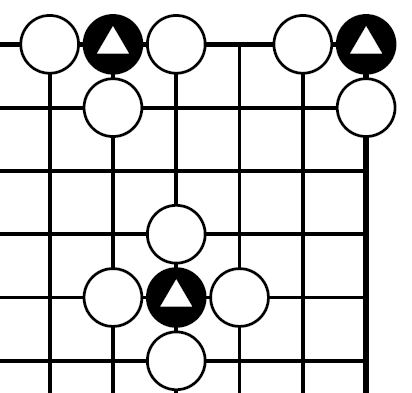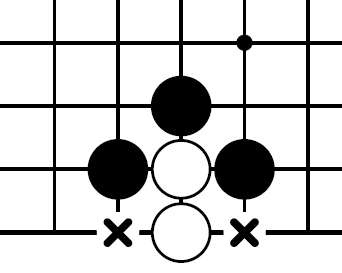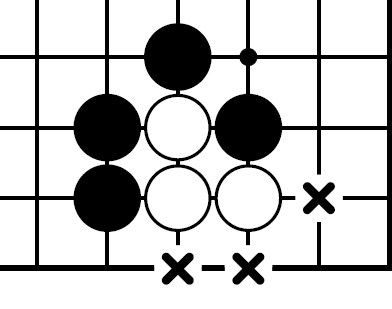It is a common notion that Go has much simpler rules compare to other board games such as chess. However, a new player will soon find themselves aimless on how to play the game. This is in stark contrast with games such as chess, where the rules may be plenty, but players may get the hang of it from start to finish as the objectives are clear to eliminate all of the opponent’s pieces. In this series of learning how to play Go, we will go over the fundamental principles of the game. As almost all moves are legal, understanding the objectives and the correct strategies to play the game becomes a huge hurdle.
Contemporary instructions go straight to abstract strategies to save time in explanation. Here, we take a different approach to attempt to break down the logic behind the abstract strategies in Go. This is to help new players make sense of how to game is played. We will discuss the fundamental rule – liberties, which develops into more abstract strategies of the game.
How To Play Go – Defining Liberties

Liberties are all adjacent points vertical and horizontal to the stone. As shown in A in fig. 1, the liberties for the stone is 4. The liberties for adjacent stones also follow the same definition, with six liberties in B and seven liberties in C.

Liberties for stones places in the first line and the edge are less than stones placed in the middle due to limited space three and two liberties respectively.

When opponent stones occupy all liberties, the stones are captured and removed from the board. The captured stone counts as a point.

How To Play Go – Defining Life and Death

To discuss life and death, one must first understand the concept of “eyes.” An example of an eye is in fig.4. No black stones can be placed inside the star point as the black stone will be removed from the board immediately due to the lack of available liberty.

Fig. 5 is also an example of an eye, where liberties are limited, and black stones can be captured if placed inside the group. Simply put, an eye is an enclosed space where an opponent’s stone cannot be placed or can be captured easily due to limited liberties.

Placing stone inside an eye point is invalid. However, when all outer liberties are filled as shown in fig.6, the eye point is no longer invalid. The white group will be captured by placing a black stone in the eye point since no liberties are left.

However, when there are two eyes in a single group, as shown in fig. 7, capturing the group becomes impossible due to 2 invalid points for black. Hence, a group that can form two eyes is alive. And the enclosed spaces of the group are considered as territory, which will count as points.
How To Play Go – Defining Territories

Here, we discuss the concept of territory, which is harder to grasp for new players due to an element of abstractness. In fig.8, the highlighted region is the black group’s territory as there is limited space where it is improbable for white stones to create a live group with two eyes. On the contrary, the enclosed space also allows the black group to create multiple eyes easily. Hence, the territory is an enclosed space where it is improbable for the opponent to create a live group, with conditions that your group must be alive.
Lines of Plays


In the game of go, playing on the third or fourth line is an essential strategy. This is due to the property of limited liberties on the first line. As shown in fig. 9 and fig. 10, white stones can be easily cornered into the first line, limiting the space for liberties and space for the white groups to escape from the capturing race. Hence, forming links in the third and fourth lines will create a potential territory region.

A two-space enclosure in the third line, as shown in fig. 11, has a well-defined potential region to form territory. Playing in the second line without a clear purpose is frowned upon, as players will find themselves with minimal potential for growing territory.
Starting Positions

Consequently, when starting the game. The player should focus on playing the corner first before continuing to the side and the center. Like the logic mentioned above, playing on the third or fourth line from the corner is the best option, as the corner becomes a sphere of influence for stone. The stone covers most grounds that can corner the opponent’s stones into limited liberty spaces. Looking at the side of the board, this advantage still applies, but to a lesser degree. Playing right in the center, however, present no such advantages.

The above figure shows an enclosed space for both black and white. For the untrained eye, it may look as if the enclosed spaces are considered as territory. But on closer inspection, you will find that there are still plenty of spaces to create live groups since the third and fourth lines are still clear and empty. In this case, we can objectively say that the enclosed spaces are not territory for both players.
Finishing the Game

The game only finished when there are no spaces left to create more points by capturing stones or forming territory. Fig. 14 presents a completed game that takes longer moves to create points, where both players can count the game. However, judging the whole board position on whether the opponent’s territory is definite remains a challenge to beginners and requires more experience to be able to judge easily.
Final Thoughts on How To Play Go
Learning to the concept of Go is not hard, but mastering the game takes years, if not decades. We hope you’ve grasp the fundamental concept of how to play Go in this article.

